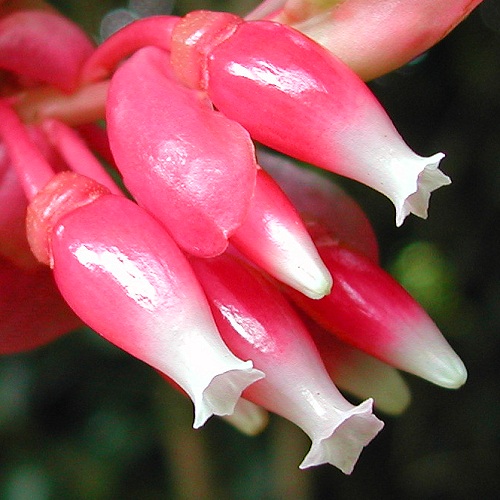Germinating the seeds
Getting started -- Use small containers or cups that have drainage holes. This plant prefers a loose, well-draining soil that is high in organic matter. A
typical mix to germinate them in is 2
parts perlite to 1 part coir fiber or peat, with some slow-release fertilizer mixed in. An alternate mix is
3 parts potting soil to 2 part perlite. Do
not add lime, since this plant likes slightly acid soil. Screen the mix of any large
chunks. Until the seeds sprout, ensure that the surface soil doesn't dry out. A plastic bag or dome may be used to maintain high humidity, but leave it open a crack to allow some fresh air in. You may need to drip a few drops of water on the surface each day. The ideal temperature for germination is about 68 to 77 degrees F (20-25°C). A little cooler at night is ok.
Avoid letting the seeds get above 80° F (27°C) for prolonged periods. I recommend placing a minimum/maximum thermometer near the pots, especially if using a heating
mat. Keep them in a bright spot out of direct sunlight. Watering -- Continue keeping the soil surface moist the first 3 weeks, but increase air circulation a bit more, to avoid stem rot. After 3 weeks, you can let the soil surface dry out, but aim to keep the soil evenly moist most of the time. Don't let it dry out completely, but don't keep it perpetually soggy either. If your tap water is very alkaline or "hard", meaning high in minerals, it's best to use bottled water or rainwater. Fertilizing
-- When they are 1 week old, give a very light dose of liquid fertilizer (about
1/8 strength), and repeat 2 weeks later.
Hydroponic fertilizer is
ideal for young seedlings,
since it is easily absorbed and complete. Once they are a month old, you
may switch to a general-purpose granular fertilizer, feeding about every 2
months. The humidity should be above about 40-45%. Indoors, if the humidity is too low, consider using an ultrasonic room humidifier, which you can buy at home-improvement stores and thrift shops. Transplanting -- Wait until the plants are at least 3 months old before repotting. Water the soil before
transplanting, to keep the soil ball from breaking apart, which can damage the roots. A good soil mix to use is 1 part fine-grade orchid bark, 1 part perlite or coarse
sand, and 1 part coir fiber or peat. - Jeff Strange Wonderful Things
|
|||||||||


